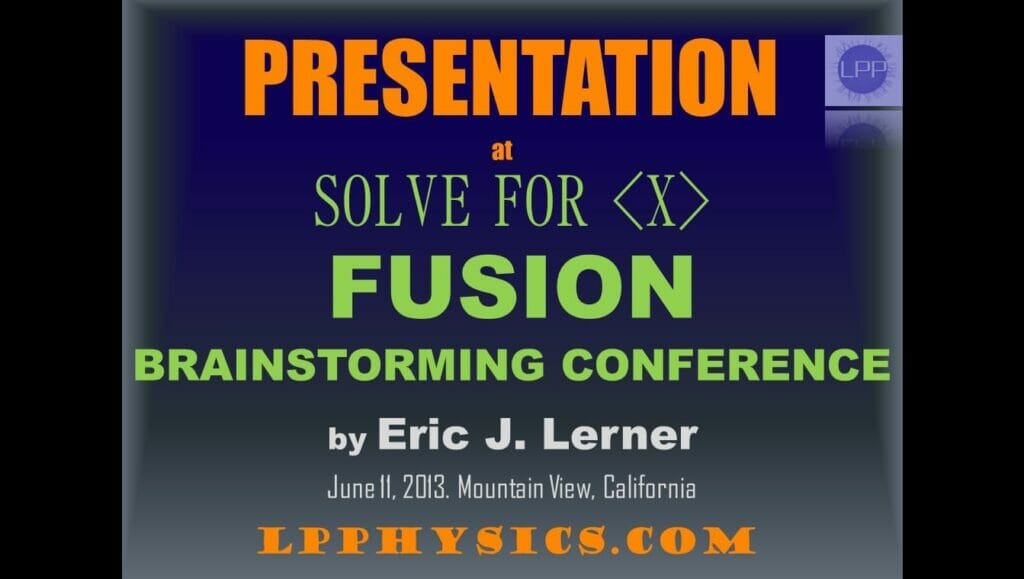
On June 11, 2013, LPP participated in Google’s Solve For Fusion Brainstorming Conference in Mountainside, California. Solve For X encourages projects to solve the toughest technological challenges of our day. The participants were scientists from Lawrenceville Plasma Physics, Inc. and three other leading fusion energy research companies: Tri-Alpha Corporation, General Fusion, and a project supported by giant multinational Lockheed-Martin. Teams of three presenters from each participating company were joined by a panel of nine fusion experts from top academic and national fusion laboratories: Princeton Plasma Physics Laboratory, MIT, the University of Wisconsin, and UCLA.
The reports given by the participants confirmed that, at the moment, LPP has achieved the best fusion results by far. LPP reported a density-time-temperature product over 2,000 times higher than that of Tri-Alpha, despite Tri-Alpha’s much larger, 150-person research team. Both of the other efforts are at considerably earlier stages of development. Professor Masaaki Yamada of Princeton commented on the great progress LPP had made since Dr. Yamada had last looked at the project after LPP’s 2007 presentation at Google Tech Talks. In particular, LPP’s results with confined plasma temperatures of 1.8 billion degrees, reported last year in the leading journal Physics of Plasmas, were far higher than the 6 million degrees reported by the Tri-Alpha team.
Two proposals emerged with broad support out of a lively discussion of the direction of fusion research. One was to draft an open letter to the US Congress urging that the US fusion energy research effort be expanded to include alternatives to the now almost-exclusive focus on the ITER tokamak project. Participants were united in their views that the present fusion program is too narrowly based. A draft of this letter is now being circulated for comments and finalization.
A second proposal was some form of joint collaboration on simulation and data analysis. Participants made no firm decisions, but agreed to carry on further discussion about these and other proposals for action. There was also a good exchange of views covering the benefits and challenges of aneutronic fusion. Both LPP and Tri-Alpha are aiming for fusion with aneutronic fuels that produce no neutrons, and thus no nuclear waste. LPP’s President and Chief Scientist, Eric J. Lerner, pointed out in his presentation that aneutronic fuels also could potentially be much cheaper than any existing energy sources, as energy could be converted directly into electricity, avoiding the cost of steam turbines and generators usually used for conversion. Other scientists agreed that eliminating neutrons from the main reaction would greatly simplify materials problems encountered using neutron-reducing fusion fuels like deuterium-tritium. Neutrons tend to destroy the materials that a DT reactor is made of, and aneutronic fuels avoid this problem. On the other hand, aneutronic fuels require higher temperatures than DT does. The event was a great opportunity to see the progress in fusion research, and an important step forward in beginning cooperative actions.
This news item was part of LPP’s July 15th, 2013 Focus Fusion report. See full report.

